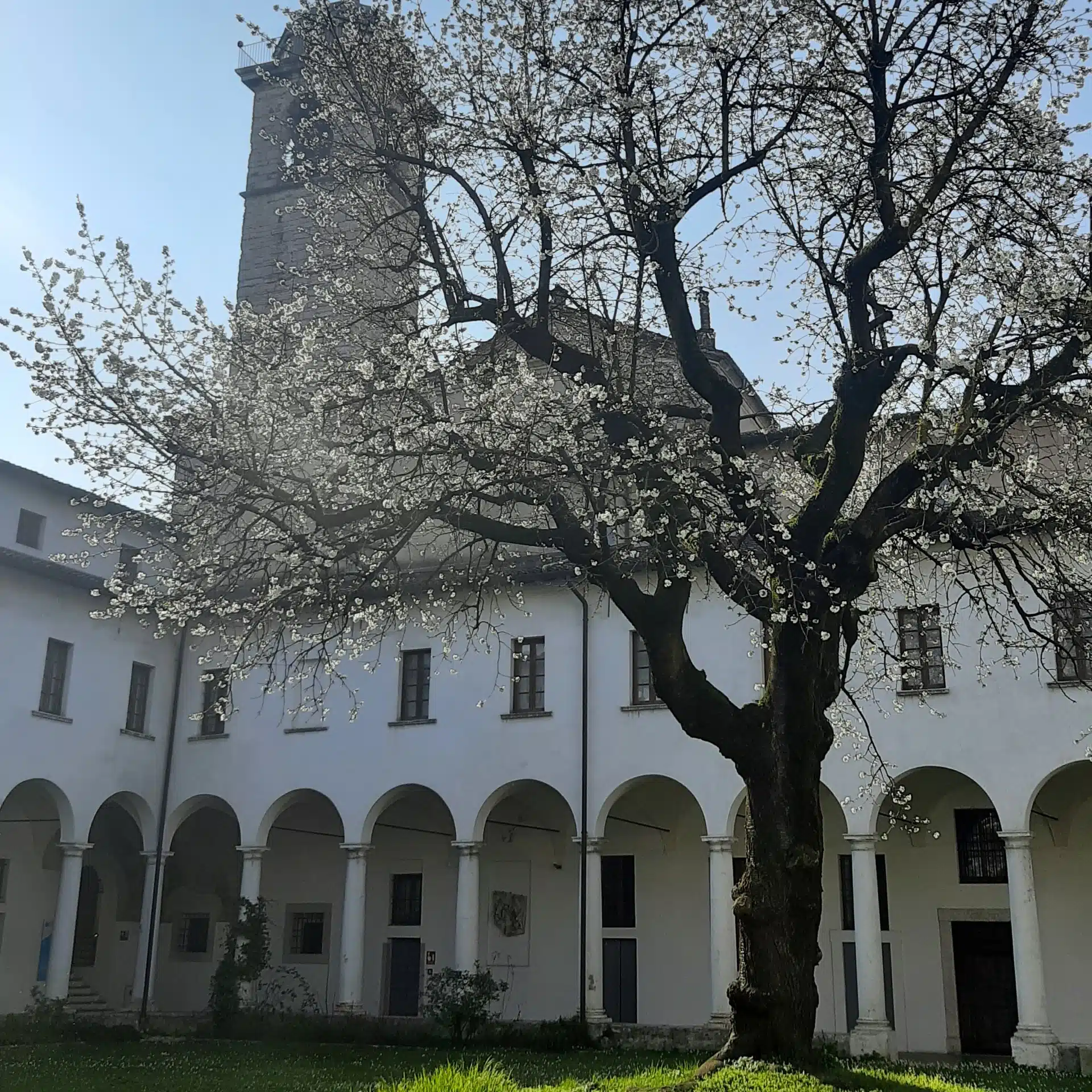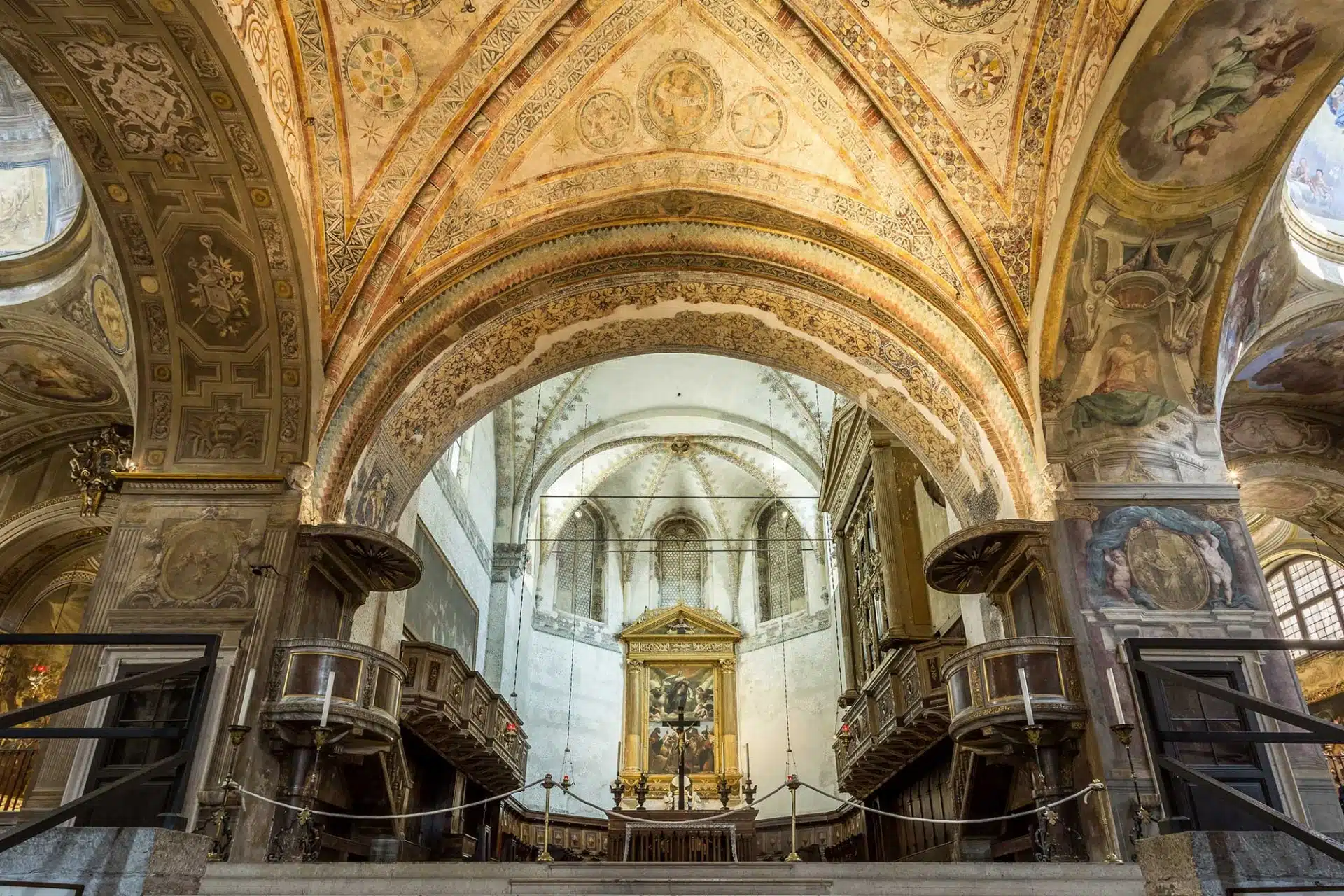Pietà con san Paolo, san Giuseppe e le pie donne
Autore: Girolamo Romanino (Brescia, 1484/1487 - post 1559) Olio su tela - 239 X 167,5 cm Provenienza: Brescia, Chiesa di San Giuseppe -
La splendida pietà firmata da Girolamo Romanino, da collocare nella piena maturità dell’artista, proviene dalla chiesa di San Giuseppe, facente parte del complesso monastico entro il quale ci troviamo.
La composizione si attiene al classico schema del Compianto sul Cristo Morto.
Tuttavia, il gruppo centrale con la figura delle Vergine, richiama fortemente la tipologia dei Vesperbild nordici, dove a dominare la scena è la Madonna con in grembo il corpo del figlio.
Il paesaggio che fa da sfondo è collinare. Svetta, sulla sinistra, il monte del Calvario, avvolto dalla luce crepuscolare del tramonto.
La croce centrale è vuota poiché il Figlio di Dio è già stato deposto.
Colpisce in maniera dirompente lo sfarzo cromatico e la finitura precisa delle vesti delle figure femminili ai lati.
Ma chi sono queste donne? In basso a sinistra, Maria Maddalena, che indossa una camicia ricamata, come se fosse una damigella, unita ad un abito verde con decori dorati.
In basso a destra troviamo santa Maria di Cleofa vestita da un manto drappeggiato caratterizzato da riflessi e giochi di luce, affatto rari nel corpus del Romanino.
Completano la scena le figure di san Giuseppe, titolare della chiesa, e quella di san Paolo Apostolo, l’unico a distogliere lo sguardo dalla scena di Pietà, rivolgendolo fuori dalla tela.
La figura di Cristo è al contempo rigida e livida: la delicatezza con cui il capo si china di lato sembra creare un dialogo – colmo di dolore – con la donna adiacente.
Ma a colpire per l’intensità dell’espressione del volto è proprio la Vergine, che si abbandona a un gemito scomposto.
Il suo aspetto appare umile, nell’abbigliamento come nel volto, privi di abbellimenti, come una madre austera che ha appena perso il figlio.











